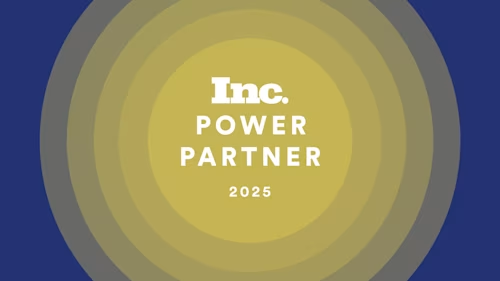
How to Choose an E-Signature Solution for Healthcare
Implementing an e-signature solution for healthcare that can meet patient expectations and handle your diverse paperwork needs means going beyond your EHR.

If the phrase “e-signature for healthcare” makes you only think of the signing pad your patients use for in-office signatures or the e-signature tool embedded in your EHR, you may be missing out on the all-encompassing potential of a full-service e-signature solution to transform the patient experience and staff efficiency. Implementing an e-signature solution that can meet patient expectations and handle your diverse paperwork needs means going beyond your EHR—and creating more efficient paperwork processes throughout your entire healthcare organization.
Full-service e-signature solutions do far more than collect and store e-signatures. Robust solutions enable:
Your patients to enjoy a more convenient experience including remote signing on their device of choice from wherever they are.
Your staff to manage the full spectrum of paperwork tasks, from preparation and form creation to ID verification, compliance and accessibility accommodations for those with disabilities.
Your practice to store templates for commonly-used forms, check the status of who has or needs to sign, bulk send policy updates to all patients (or employees), provide multiple authentication methods and create self-service forms on your website.
Unlike e-signatures embedded in your EHR, modern-day e-signature solutions provide additional functionalities such as mobile, text, and email compatibility, which are critical to satisfying patients’ expectations, allowing them to sign on any device—while, for you, maintaining a full audit trail of who signed, when, and where. And because compliance is of utmost concern within the healthcare industry, these solutions also maintain the highest security standards, so you can be confident in protecting the privacy of your patients’ digital health information.
Reap the full benefits of improved patient experiences, better staff utilization, and automated paperwork processes by using electronic signatures to:
Minimize opportunities for human error
Increase patient throughput and revenue by decreasing time spent in the waiting room
Keep digital patient data more private and secure than paper documents
Reduce the frequency of not-in-good-order (NIGO) documents
Help manage HIPAA compliance by keeping electronic patient data secure
Improve operating efficiency
In a world where broad e-signature tools are sweeping through organizations, sticking with the status quo of EHR e-signatures or even paper signatures can result in significant declines in patient satisfaction and medical staff productivity. Though there are several full-service e-signature platforms on the market, they all don’t come with the same features and support. When selecting an e-signature solution, look for one that goes beyond the EHR; here are a few important criteria to consider while evaluating potential solutions.
A primer for selecting an electronic signature partner for healthcare
1. Does the e-signature solution improve the patient signing experience?
As a healthcare provider, the patient experience is at the heart of your continual drive for superior service and retention. However, for many patients, filling out patient forms is a time-consuming component of their visits. When choosing an e-signature solution, look for features that ensure accessible and intuitive paperwork completion, so patients can save time, quickly move onto the core reason for their visit, and have an overall more satisfying patient experience.
Mobile compatibility, automated and digitized workflows, digital data collection—the features of a full-service e-signature solution go beyond what your EHR e-signature tool is capable of and make it easier to collect third-party signatures, sign paperwork remotely, and create an easy and trusted signing experience.
Some questions to ask:
Does this electronic signature go beyond signing capabilities and offer a markup feature so patients can quickly capture the location of health concerns on the human body on a digital form?
Can patients and third parties sign remotely on mobile devices, PCs and tablets?
Does the provider offer quick and easy implementation so you can go live in a matter of weeks?
Do they provide a mobile app for an even more mobile-friendly and convenient user experience?
Can patients receive signing notifications by SMS text message to speed up paperwork completion?
2. Does the e-signature platform integrate with existing systems?
Healthcare workers are overworked and burned out. Software solutions should ease the burden of their daily workload. To this end, it’s important that your e-signature partner has the dynamic integration capabilities to work across the systems your organization already uses and those you might implement in the future.
Look for an e-signature that integrates with software solutions such as Hyland ONBASE and Microsoft. The traditional view has been that integrations can be a lengthy and difficult process that can take years, but with new interoperability standards, it doesn’t have to be. For example, your electronic signature partner should be able to connect to the Electronic Health Records (EHR) software your organization uses and automate the upload of patient forms into your patient record or document management tool of choice.
Choosing an e-signature solution that goes beyond your EHR and integrates with the systems your organization already works with will allow you to improve processes and leverage your investment throughout your organization. Consider the numerous ways in which your healthcare organization can implement an e-signature in the future, such as:
Digital hiring and onboarding forms including offer letters, I-9s and W-4s
Bulk sending employee policy updates
Supplier contracting forms, NDAs, SOWs and purchase orders
Legal and compliance documentation
Some questions to ask:
Does this e-signature provide configurable APIs and SDKs to integrate with our current and future workplace applications?
Can this electronic signature connect to the EHR software we use?
Will this tool grow with my organization and help us adapt to the evolving trends in the healthcare industry?
3. Does the e-signature tool automate workflows and eliminate manual tasks?
Patients aren’t the only ones who suffer from inefficient agreement processes. With traditional paper-based agreements, healthcare workers spend valuable hours manually checking forms for accuracy and rekeying paperwork into systems.
According to a 2020 survey by Docusign, the average healthcare employee spends over an hour on faxing and printing, while 40% spend over 5 hours.
The ideal e-signature solution will have automation capabilities that cut out manual tasks and give healthcare workers more time on what matters most. Look for an e-signature platform with configurable workflow features to automate the process of generating document templates and signee information on forms.
Some questions to ask:
Does this e-signature solution offer signing insights and reporting so you can see where a document is in its signing journey?
Can it perform advanced recipient routing to automate the order in which stakeholders review and sign forms?
Can it leverage templates for commonly-used forms like medical intake forms, provider agreements, resident onboarding documents and credentialing forms?
Does this electronic signature tool have bulk-send capabilities?
Can it provide self-service online documents with secure URLs links so you can collect signatures outside your EHR through a portal on your website?
4. Will the e-signature solution mitigate security risks and simplify compliance?
Subject to robust federal regulations like HIPAA, healthcare organizations need an e-signature solution that helps them securely store data and comply with patient privacy laws. Extensive privacy protection, threat detection and security measures all help ensure seamless compliance with HIPAA’s standards for Protected Health Information (PHI).
Look for e-signature partners with HIPAA-approved templates for documents like disclosure forms, prior authorization forms, BAAs and new patient intake forms. In addition, electronic audit trails noting the time documents are opened, received and signed allow for comprehensive oversight of the agreement process.
Some questions to ask:
Does this provider have security certifications for the strictest requirements like FedRAMP Moderate, IL4 Provisional Authorization, ISO 27001 and SSAE 16, SOC 1 Type 2?
Does this provider adhere to industry regulations, such as HIPAA and 21 CFR Part 11, so you can conduct clinical studies at your hospitals compliantly?
Does this e-signature solution include products such as organization management, document-access management, audit certificates of completion and monitoring tools?
Does the e-signature offer a minimum of 256-bit encryption and multiple identity verification methods to protect sensitive information like demographic data, medical history, lab results, and insurance details?
Does it support multiple verification methods such as digital ID verification, email, SMS authentication, one-time access codes and phone calls?
Does it offer administration tools to centrally manage e-signatures across all departments and organizations so you can maintain control over document security settings?
Does it offer advanced analytics to track e-signature activity from web, mobile and API in addition to detecting potential threats with rule-based alerts and responding quickly with decisive actions?
5. Does the e-signature provider offer ongoing technical and strategic support?
Not a vendor, but a partner—the ideal e-signature provider will be someone who understands that your relationship won’t end with the initial implementation of their product. They should be forward looking, helping you find new ways to optimize your use of e-signatures, offering assistance in the case of technical difficulties, and presenting ways that facilitate the scaling of your practice. Weigh a partners’ ability to provide comprehensive educational resources, training tools and user forums to answer all of your team’s questions.
As a healthcare provider, you also want to ensure that your patients with visual, physical or speech impediments can successfully access digital paperwork. Before making your selection, verify that the signing tool is accessible to those challenged by a handicap or lacking technological expertise. Does the provider have a plan for accommodating these individuals? If they don’t, does their attitude suggest they would be eager to brainstorm a potential solution for the missing features?
Some questions to ask:
Is the provider’s support staff available 24/7 to provide technical assistance?
Does the solution conform to and continually test for Government Section 508 and WCAG 2.1 Level AA compliance?
Does the platform have built-in accessibility tools for those who require physical or verbal accommodations such as compatible screen readers for commonly-used browsers, high-contrast tools on supported operating systems and keyboard-only input?
Is the provider continually improving their digital agreement tools through version updates?
What is their availability record? Are there upgrade or maintenance windows when the service could be down?
How does this tool engage the elderly population?
Does it offer mobile solutions so patients can receive notifications via text message and conveniently sign documents on the go with mobile-responsive forms that make long forms easier to view and eliminate the need for pinching or zooming.
Harnessing the power of e-signatures for positive healthcare experiences
With the growing prevalence of digitization across all sectors, patients and staff are expecting the same ease when it comes to paperwork. What’s more, as healthcare organizations face concerns of staff overload and increasing compliance obligations, providers who continue to use paper signatures or limit e-signature to just their EHR tool can fail to give medical workers the support they need and patients the convenience they expect. Adopting a comprehensive electronic signature solution can help healthcare organizations big and small improve patient satisfaction, support long-term growth and lessen the paperwork burden on their staff.
Keep up with form workflows with a streamlined agreement process. Learn about how Docusign eSignature can help healthcare providers transform the patient and staff experience.
Related posts
Docusign IAM is the agreement platform your business needs




